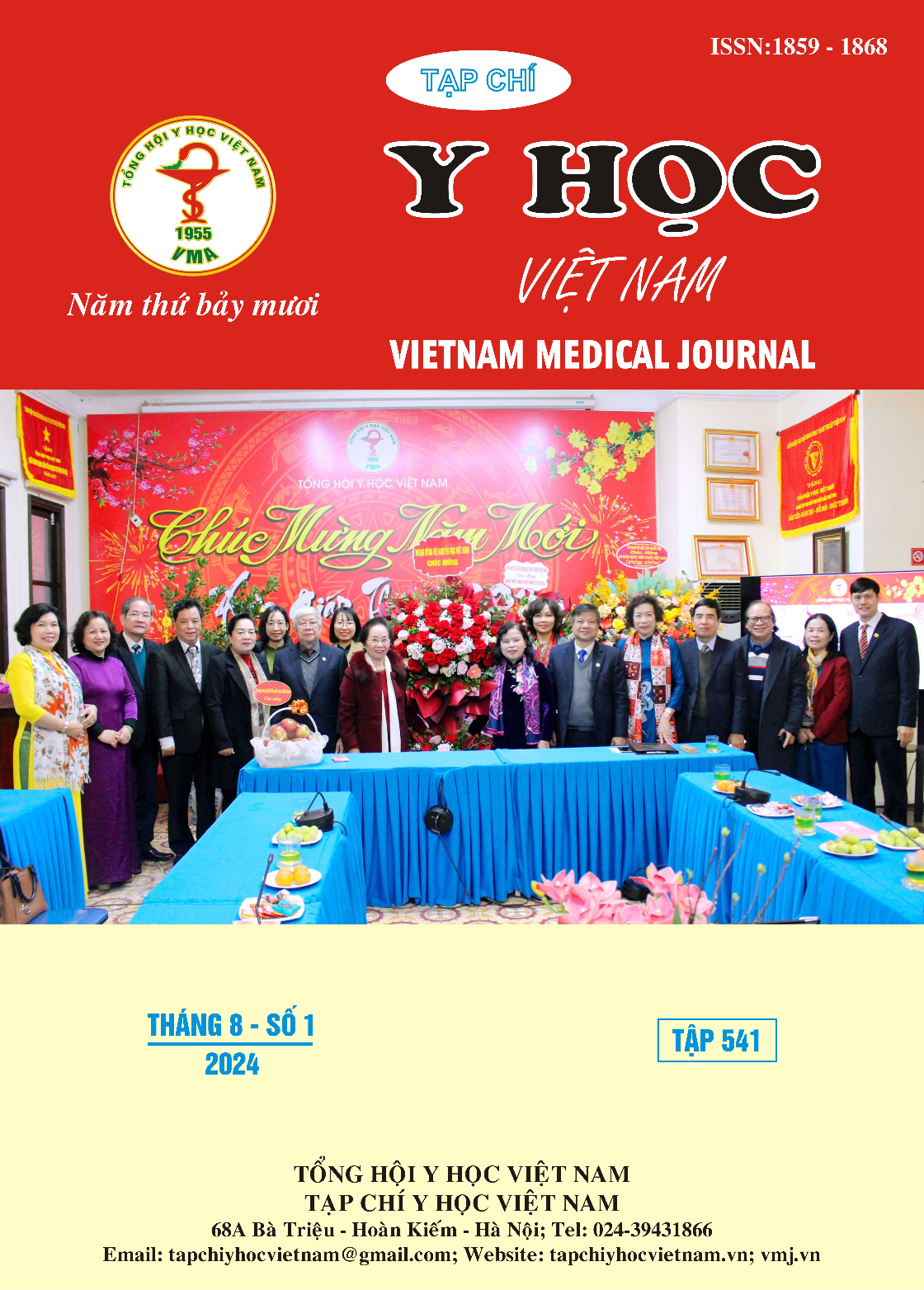DISTRIBUTION AND ANTIMICROBIAL RESISTANCE CHARACTERISTICS OF SALMONELLA SPP. STRAINS ISOLATED AT MILITARY HOSPITAL 103
Main Article Content
Abstract
Objective: Study the distribution and antibiotic resistance characteristics of Salmonella spp. strains isolated from Military Hospital 103 in the period from 2014 to 2022. Subject and methods: This was a descriptive study. The subject of the study was Salmonella spp. strains isolated from Military Hospital 103 in the period from 2014 to 2022. Results: The total number of Salmonella spp. strains isolated in the period of study was 42. Of which, the percentage of Salmonella spp. isolated from patients in the age group of ≥60 years was 45.2%. The rate of Salmonella spp. causing diseases in males (78,6%) was approximately 3.5 times higher than that in females (21.4%). Blood and body fluid specimens were the two most common specimens in which Salmonella spp. was isolated, accounting for 66.7% and 19.0%, respectively. The percentage of Salmonella spp. isolated from the internal medicine wards was the highest among hospital wards, at 52.4%. Salmonella spp. was the most resistant to ampicillin (52.0%). By contrast, Salmonella spp. was the most sensitive to meropenem (97.2%), imipenem (96.8%), cefepime (94.2%) và ceftazidime (91.9%). Conclusion: Our study indicated that Salmonella spp. isolated from blood and patients ≥ 60 years old were the most. Salmonella spp. was the most resistant to ampicillin and most sensitive to meropenem, imipenem, cefepime, and ceftazidime.
Article Details
Keywords
Salmonella spp., antibiotic resistance, bacteria
References
2. M. Pitti, et al., Monitoring of Antimicrobial Resistance of Salmonella Serotypes Isolated from Humans in Northwest Italy, 2012-2021. Pathogens (2023). 12(1).
3. L. A. Andoh, et al., Prevalence and characterization of Salmonella among humans in Ghana. Trop Med Health (2017). 45, 3.
4. Amy L. Leber, Clinical Microbiology Procedures Handbook. ASM Press. (2016).
5. Clinical and Laboratory Standards Institute, Performance Standards for Antimicrobial Susceptibility Testing. 32nd ed. 2022: CLSI.
6. Priyia Pusparajah Shu-Kee Eng, Nurul-Syakima Ab Mutalib, Hooi- and Kok-Gan Chan & Learn-Han Lee Leng Ser, Salmonella: A review on pathogenesis, epidemiology and antibiotic resistance. Frontiers in Life Science, (2015). 8:3, 284-293.
7. T. Lamboro, T. Ketema, and K. Bacha, Prevalence and Antimicrobial Resistance in Salmonella and Shigella Species Isolated from Outpatients, Jimma University Specialized Hospital, Southwest Ethiopia. Can J Infect Dis Med Microbiol (2016). 2016, 4210760.
8. J. A. Crump, et al., Epidemiology, Clinical Presentation, Laboratory Diagnosis, Antimicrobial Resistance, and Antimicrobial Management of Invasive Salmonella Infections. Clin Microbiol Rev (2015). 28(4), 901-37.


